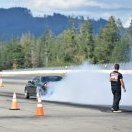Spline Drive - Opnions, facts, any failures??
Announcements
-
Similar Content
-
Latest Posts
-
Unsolicited advice? Keep the engine as close to stock as you can. Nothing wrong with adding some boost and making a little more power, but given where you are, you really don't want to try to make it into a monster. I can't imagine the roads are up to it, and the lack of locla support when it grenades will be a ball ache. FWIW, If there is a dyno around that you can access, then brand new injectors are a good idea, which will lead you to (at least) putting a Nistune in it, which will allow you to put an R35 AFM on it, all of which will make it possible to make it much much nicer to drive and live with.
-
List all of your mods. It sounds like an aftermarket ECU hitting rev limiter. Like a valet mode, or a cold rpm limiter?
-
@Kapr Haha yeah thats the one. I missed that you had a built up engine, I wouldn't want to run it on there either then. It was good in my situation just to replace the original turbo on a stock engine. @MBS206Yep definitely not a replacement for anything name brand
-
You are selling this? I have never bought something from marketplace...i dont know if i trust that enough. And the price is little bit "too" good...
-
By Watermouse · Posted
https://www.facebook.com/share/19kSVAc4tc/?mibextid=wwXIfr
-








Recommended Posts
Create an account or sign in to comment
You need to be a member in order to leave a comment
Create an account
Sign up for a new account in our community. It's easy!
Register a new accountSign in
Already have an account? Sign in here.
Sign In Now